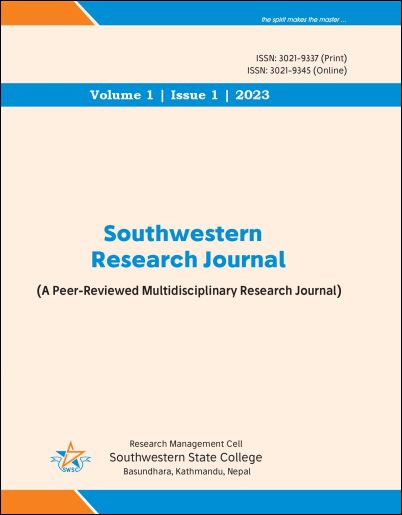The Impact of Social Health Insurance on Household Catastrophic Healthcare Expenditures Associated with Chronic Diseases in Sundarharaincha Municipality, Morang
DOI:
https://doi.org/10.3126/srj.v1i1.62263Keywords:
Catastrophic healthcare expenditures, Chronic diseases, Social health insurance, Sundarharaincha MunicipalityAbstract
Introduction: Catastrophic health expenditure (CHE) is the condition of paying for health care that exceeds a defined family income or consumption level. Households who spend CHE may have to forego the consumption of other goods essential to their well-being. Chronic diseases require ongoing and often expensive healthcare services and treatments, which can be financially devastating for households without adequate health insurance coverage. Social health insurance programs can provide financial protection and access to healthcare services for individuals and families with chronic diseases. This study aims to assess the impact of the social health insurance program on household catastrophic healthcare expenditures associated with chronic diseases in Sundarharaincha Municipality, Morang.
Method: A Retrospective Cross-sectional research design was adopted to collect the data from 424 households by cluster and probability simple random sampling technique. A semi-structured questionnaire was developed based on an intensive literature review. The investigator himself after the approval of the PUSHS- IRC (Purbanchal University School of Health Sciences Institutional review committee) collected data. Before data collection, formal permission was obtained from the Municipality office of Sundarharaincha. Written and verbal consent was obtained from each literate and illiterate household respondent respectively before the interview and observation. The findings were described in descriptive and inferential statistics.
Results: The data show that various socio-demographic characteristics are associated with catastrophic healthcare expenditures. A significant impact is seen between social health insurance and catastrophic healthcare expenditures associated with chronic diseases. The majority of the respondents (93.4%) stated that health insurance protects their financial crisis from catastrophic healthcare expenditure. Most (93.7%) of the respondents who expressed reduced economic burden and others as benefits of the enrolment, were compared to health service from specialized hospitals (92.9%) among those who were protected from catastrophic healthcare expenditures by the health insurance program. Similarly, 94.7 % of the respondents said the economic burden was a problem if not enrolled in the health insurance program and 83.3 percent said tension and others as problems if not enrolled. This study also shows that 87.8 percent of the insured respondents who were protected against CHE by the health insurance program had less than 5000 NPR costs per visit (<0.001). Out of the total respondents who were protected against CHE by the health insurance program, 93.6 percent were satisfied with health insurance and 92.9 percent want to continue health insurance in the coming days.
Conclusion: By providing adequate coverage and support for households with chronic illnesses, social health insurance could significantly reduce the incidence of catastrophic healthcare expenditure, contributing to poverty reduction and improved health outcomes. Policymakers related to social health insurance program and the concerned government should implement measures to increase health insurance coverage among households having chronic diseases to reduce the burden of healthcare expenditure.




